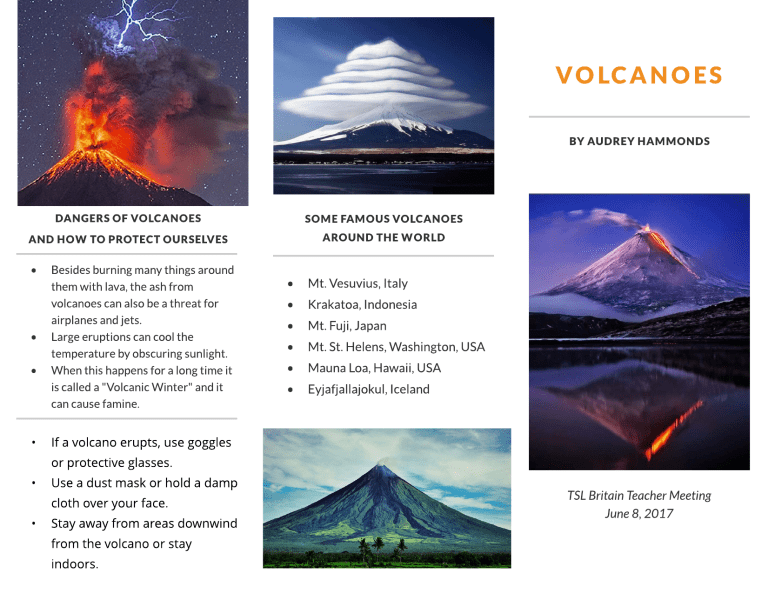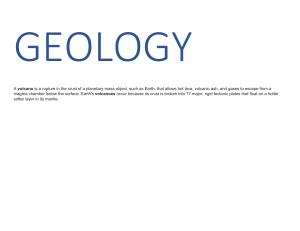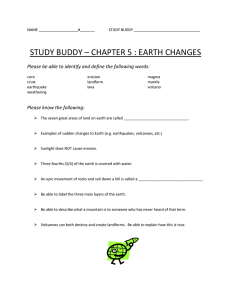
V O LCA N O ES BY A UDREY H A M M O N DS DA N GERS O F V O LCA N O ES SO M E FA M O US V O LCA N O ES A N D H O W TO PROTECT O URSELV ES A RO UN D TH E W O RLD - - - Besides burning many things around them with lava, the ash from volcanoes can also be a threat for airplanes and jets. Large eruptions can cool the temperature by obscuring sunlight. When this happens for a long time it is called a "Volcanic Winter" and it can cause famine. - Mt. Vesuvius, Italy - Krakatoa, Indonesia - Mt. Fuji, Japan - Mt. St. Helens, Washington, USA - Mauna Loa, Hawaii, USA - Eyjafjallajokul, Iceland If a volcano erupts, use goggles or protective glasses. - Use a dust mask or hold a damp cloth over your face. - Stay away from areas downwind from the volcano or stay indoors. TSL Britain Teacher Meeting June 8, 2017 H O W DO TH EY FO RM ? W H ERE A RE TH EY FO UN D? W H AT A RE TH E DIFFEREN T TYPES? Three major types: - - - Volcanoes are found all over Earth, but usually where tectonic plates meet. The "Ring of Fire" is a large area circling the Pacific Ocean where many volcanoes form and earthquakes happen. - - Most volcanoes are underwater. - - Earth's crust is broken into 17 rigid tectonic plates. These plates can slide around because they are on top of the mantle layer which is hotter and softer. Volcanoes pop up when tectonic plates diverge or converge where they split apart or come together. Magma is melted rock that is pushed out from the mantle to the Earth's surface, which is called an eruption. Volcanoes can also form when the Earth's crust stretches or thins. - - - Composit e volcanoes are large and steep. They erupt with thick lava and high levels of gas in explosions. Cinder Block volcanoes are steep with a small crater, and erupt violently with some gas and lava from the sides or base. Shield volcanoes are wide and low, and erupt less violently with lots of flowing magma. Volcanoes can be act ive, with regular activity; dormant , historical activity but now quiet; or ext inct , no activity and unlikely






